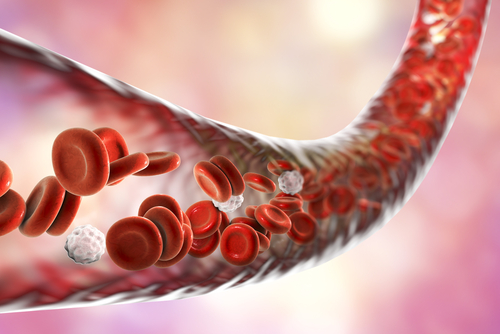Two Genes May Be Therapeutic Targets for Acute Hereditary Angioedema, Study Finds

Comparing the genetic profile of patients with hereditary angioedema during remission and in acute attacks, researchers identified two genes that seem to participate in edema formation. The genes – uPAR and ADM – are involved in vessel dilation and inflammation, and may be potential therapeutic targets for the disease.
The findings are in, “A transcriptomic study of Hereditary Angioedema attacks,” published in the Journal of Allergy and Clinical Immunology.
Hereditary angioedema, or HAE, is a potentially life-threatening disease usually caused by mutations in the C1-inhibitor gene. This leads to an increase in bradykinin, a compound that causes blood vessels to dilate and is the principal mediator of symptoms of acute angioedema attacks. But the molecular mechanisms that lead to bradykinin production and release are not fully known.
This led researchers in Italy to study the genetic profile of patients undergoing acute angioedema attacks. This was compared with their genetic profile during remission (free of attacks for at least one month) and with the profile of healthy individuals.
In particular, the investigators analyzed the levels of messenger RNAs – the intermediate molecules between the DNA and proteins – from cells in the blood.
The analysis included blood samples from eight patients. There were 23 genes whose expression was significantly increased during an acute attack, researchers found.
After clustering these genes into 10 sets – each identifying a specific biological process – the team found that genes involved in “response to external stimulus” and “protein processing” were significantly increased during an acute attack.
Computational tools helped researchers cluster the genes into biological pathways, allowing them to understand which ones are being modulated in the context of angioedema attacks.
The analysis revealed that these genes were primarily involved in specific pathways of the immune system, including the signaling of natural killer cells and leukocyte extravasation signaling, or when immune cells migrate from the blood to a tissue during inflammation.
Results support the involvement of blood immune cells in hereditary angioedema acute attacks.
Investigators then examined which genes were specific to patients with angioedema, and compared the genetic profile to that of healthy subjects. The analysis revealed 603 significantly altered genes in patients with HAE.
Looking at the genes expressed during an attack – because patients in remission theoretically have similar physiological conditions as healthy individuals – the team found that genes belonging to “cell matrix adhesion,” “cell substrate adhesion,” and “g protein signaling coupled to camp nucleotide second messenger” were differentially regulated during the remission phase of the disease.
Additional pathways included “inflammatory response” and “immunological disease.”
Two particular genes, called cellular receptor for urokinase plasminogen activator (uPAR) and adrenomedullin (ADM), were highly expressed during the acute attack of the disease. These genes have a role in the inflammatory response and in the vascular tone, the contractile activity of smooth muscle cells in the walls of blood vessels, and a major determinant of the resistance to blood flow.
Most importantly, they also play a role in bradykinin-forming mechanisms, the principal mediator of hereditary angioedema attacks.
Using a different group of 20 patients with similar clinical and demographic characteristics, researchers confirmed that the expression of both genes is increased in angioedema patients. The team also found that inhibiting uPAR in the lab reduced bradykinin levels.
“Our study demonstrates the increase of ADM and uPAR in [circulating white blood cells] during the acute attack of HAE,” researchers wrote.
“Activation of these genes usually involved in the regulation of vascular tone and in inflammatory response might have a pathogenic role by amplifying bradykinin production and edema formation in patients with HAE,” the study concluded.






